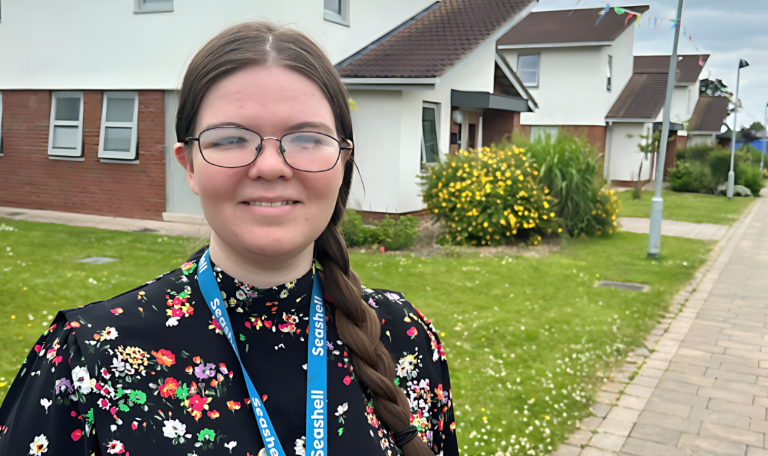How digital speaks volumes for non-verbal young people in residential care

Rebecca White is a business data analyst for Seashell Trust - a national learning disability charity based in Stockport, which supports children and young adults with complex learning difficulties, disabilities, and additional communication needs.
In an article first published in Caring Times (September), Rebecca outlines why she signed up for Topol Digital Fellowship and the huge difference a digital system has made to the residents and staff she supports.
I support care managers and teams in our day services and our home-from-home care houses, where young people live in safe, supported shared accommodation and attend school, college or work-based learning.
I signed up for the Topol Fellowship to help me plan and manage the switch from paper-based records to digital social care records across the whole of Seashell Trust, including all ten houses, plus our day services and outreach work. We chose our system from DiSC’s assured solutions list.
I have to confess, I went into it feeling pretty cynical and thinking the first three months at least would be really difficult for the team, but that the benefits would come later. At the end of the first week, not one of the team had to stay late to write up their notes, because they had done it on the job as they went along. The second week, updating records and notes was so quick that we managed a stand up meeting at the end of each day – giving us time to plan the next day based on the records taken.
We have four young men living in this house who are all very active. Before the online system, notes were shared on email, and because staff are straight into it supporting our residents as soon as they come on shift, they wouldn’t get to read updates until much later in the day. But the digital care record is picked up at the start of the day on the team member’s Trust-owned tablet or smartphone. It’s meant we’ve been able to plan and do activities based on what happened the previous day, which we wouldn’t have known about otherwise.
In one of our homes, all four residents have autism and one of our young men, who is non-verbal and communicates mostly through gestures and sounds, finds it particularly difficult to change routine. Recently the team started to notice he was showing an interest in doing new things. At certain times of the day, he was signaling something. They realised that it was happening when others were going out for a walk, a sign that he too wanted to join them. The team only spotted this pattern emerging because of the digital system, and the detail and timings that it allows us to record. When we were working with paper, by the time we got to documenting the day, the details and in particular the timings were hard to capture. And even if we had, it was very hard to flag up or share with colleagues.
Paper was actually a bit of a nightmare in most of our homes. Our young men are often motivated by sensory needs – and ripping paper is a very sensory and satisfying activity. But in practice it meant staff going into a separate room, often at the end of a 7-10 hour shift, to update records. Switching to digital has been really enriching – staff can just make a note of things there and then. And most importantly, we don’t have to step away. We can be in the room all the time with our residents, which means they stay a lot more settled.
Almost half of our residents have previously experienced residential care, whether that is a residential school, care home, fostering or regular short breaks provision. All our residents have an EHCP or an IDP (Welsh equivalent of EHCP).
Because we support adults aged 18-25 who are making decisions about work, further education and future living arrangements, this is a period of time where capturing the views of our residents is crucial for helping them participate meaningfully in planning their adult lives. This is one of the real benefits in my view - digital recording can surface those views of young people in real-time and form strong evidence of their preferences, wishes and aspirations, even when they may have limited functional communication.
It helps hugely too with the requirements of EHCPs and to prepare for review meetings with social workers. The evidence that goes into those assessments is crucial. It used to be really time consuming to write up reports and we had lots of separate recording systems. Digital does so much of that work for us. It’s all in the system and easy to pull together.
No-one starts working in care because they love writing reports. They come into care to support people – and I have been amazed by how much more we can do with the people we support since we put our digital system in place.